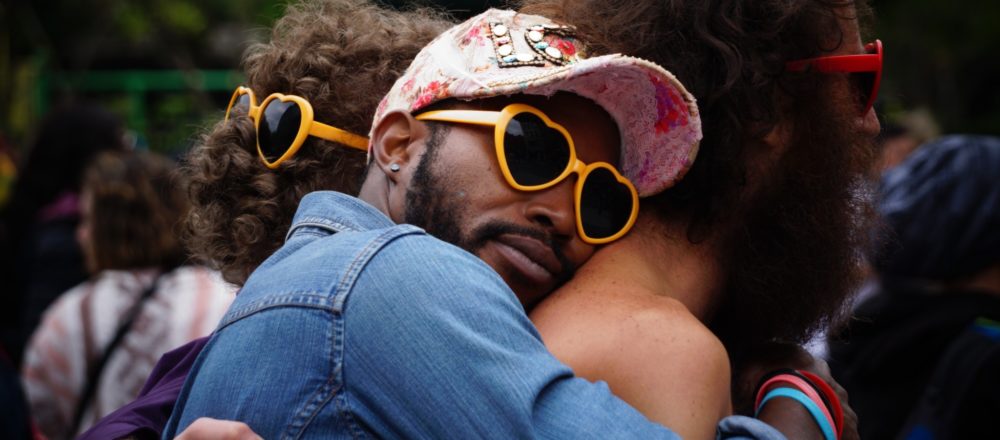The vast majority of Australians breathed a collective sigh of joyful relief on Wednesday. Perhaps some, like me, later felt their elation turn bittersweet. It has been a bruising debate. The choice to hold a non-binding referendum on civil rights continues to sting. And Parliament is yet to do its job and legislate for marriage equality.
Opponents of same-sex marriage have already regrouped to fight another fight: to protect religious freedom and freedom of conscience. But what does this mean?
It is undisputed that religious ministers would not be required to perform same-sex marriage ceremonies. What opponents of same-sex marriage are talking about is a much broader right to discriminate in the provision of services, irrespective of whether these are religious services, based on an individual’s religious beliefs and freedom of conscience.
The paradigm case is that of the baker, florist or caterer who does not want to provide their services for a same-sex wedding because of their religious beliefs. Currently, the refusal to provide services in these circumstances would, in general, fall foul of existing anti-discrimination laws.
Some commentators have feared that opponents of same-sex marriage intend to use the introduction of legislation enabling same-sex marriage as an opportunity to undermine existing protections under Australian anti-discrimination laws.
The response to these calls for wide protections of religious freedoms has been strong. During the Senate debate on the Marriage Amendment (Definition and Religious Freedom) Bill sponsored by Senator Dean Smith, supporters of same-sex marriage repeatedly stated that the current Australian anti-discrimination laws should not be watered down. The strong vote in support of same-sex marriage was cited as evidence that the vast majority of Australians want equality in the treatment of same-sex couples.
The Bill itself is intended to strike a balance between legislating for equality and protecting religious freedoms. Currently, the Bill:
– Enables ministers of religion to refuse to solemnise a marriage in conformity with their religion’s doctrine, their religious beliefs, or in order to avoid injury to the susceptibilities of their religious community;
– Introduces a new category of “religious marriage celebrants” who will be able to refuse to solemnise a marriage in conformity with their religious beliefs; and
– Permits bodies established for religious purposes to refuse to provide facilities, goods and services consistent with their religion’s doctrine, tenets or beliefs, or if it is necessary to avoid injury to the feelings of their religious communities.
Arguably, this Bill already is far-reaching in nature. A same-sex couple may be lawfully refused from holding their non-religious wedding reception in a church hall, for example. Nonetheless, the Bill has wide cross-party support in its current form by Labor, the Greens, crossbenchers and within the Liberal Party. With the Senate debate on this Bill to resume on 27 November, it remains to be seen whether further provisions for religious freedom will be agreed to. I hope the Senate recognises that most Australians do not want one type of discrimination against same-sex couples to be swapped for another.
This is also an opportune moment to acknowledge the fragmentation of the Australian anti-discrimination framework. This framework is complex, with both state and federal laws, and prohibition against discrimination based on sexual orientation or gender identity occurs at a state level.
While the exceptions to anti-discrimination laws generally apply to religious bodies in limited circumstances, this is not true across all states. For example in Victoria, under the Equal Opportunity Act 2010, a person may discriminate against another person (including in the provision of goods and services) on the basis of that person’s sexual orientation, lawful sexual activity, or gender identity if the discrimination is reasonably necessary for the first person to comply with the doctrines, beliefs or principles of their religion.
This exception does not appear to be widely litigated, but it is a clear example of how the protection of the rights of an LGBTQI person may differ across state boundaries. On its face, this provision appears broad enough to allow for the type of discrimination currently sought by same-sex marriage opponents in the process towards legislating for same-sex marriage. As we move towards equality for more Australians, there is a clear need to address these discrepancies, in addition to amending the Marriage Act to enable same-sex marriage.
Although the stated aim is to legislate for marriage equality by Christmas, same-sex marriage supporters in Parliament must not compromise on the principle of equality in seeking to reach agreement. While the situation in Victoria has been noted above, in general the existing anti-discrimination laws provide a good example of how to balance protecting religious freedoms with prohibiting discrimination against LGBTI people. These laws should not be eroded. It is surely obvious that the vast majority of Australians and the LGBTQI community will not accept the diminution of existing anti-discrimination laws as the price for enabling same-sex marriage. Australia did not shout “YES, BUT…”


